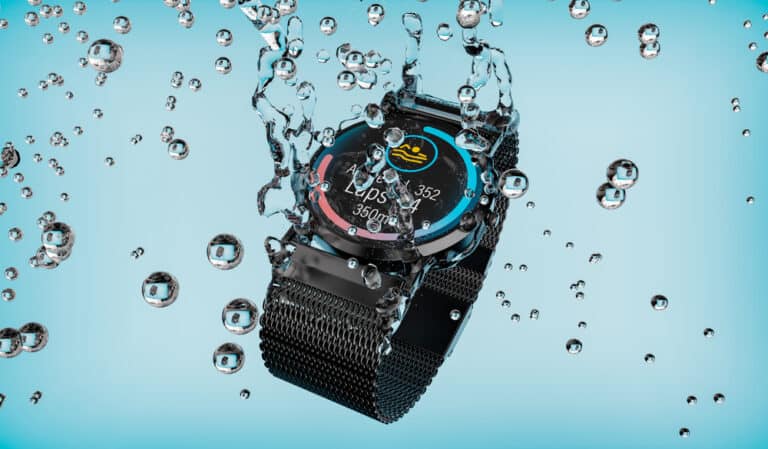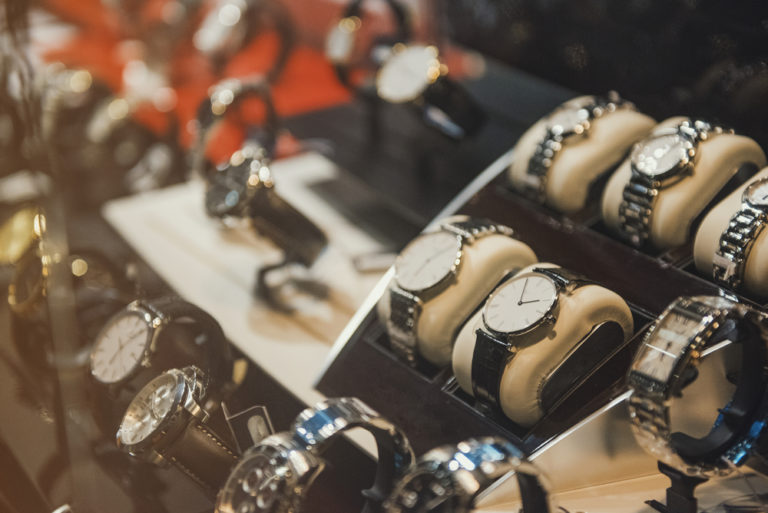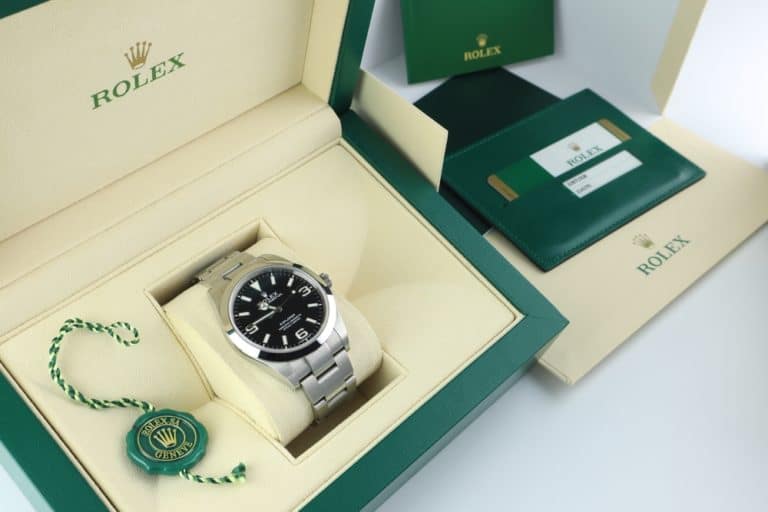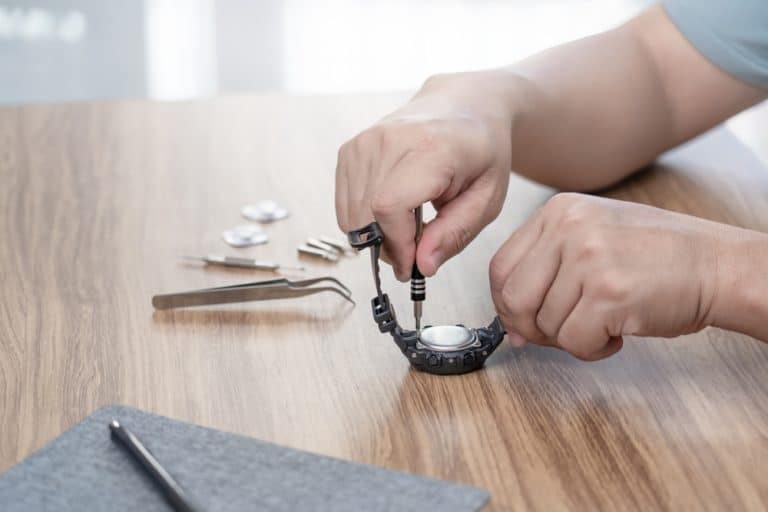During World War I, soldiers had problems reading their watches in the dark trenches. Watchmakers began making pieces with luminous hands and numbers to solve this problem. They used paint containing radium 226 to create a product that had radioluminescence. Most watches with luminescent features made prior to the 1970s used this paint. Radium is a radioactive substance that causes severe health problems. Owners of radioluminescent watches often want to know how to remove radium from their watches.
Radium may be removed from watch hands and numbers by scraping it with a thin wooden or plastic stick. Gloves and a mask should be worn while you work to prevent accidental exposure to radium. Care must be taken not to inhale or ingest paint flakes or dust as this is dangerous to your health.
Most watches with radium paint are vintage timepieces, so care must be taken to preserve the watch’s value. Removing the radium paint can be a tricky job to complete while preserving the integrity and value of the watch.
Methods To Remove Radium From Watches
One of the most challenging aspects of removing radium paint from the hands and numbers of a watch is preserving the watch face. It is easy for your hand to tire and slip, accidentally scratching or marking the watch face. The damage will destroy the value and aesthetics of the watch.
The above reason is why many people prefer to take their watch to a professional for this adjustment. These watches are, after all, vintage and carry considerable value; The watch may also be inherited from a parent or grandparent and have sentimental appeal.
If you decide to remove the radium paint yourself, there are several methods you can use.
- If the hands and numbers are easily removed from the watch face, they can be soaked in water for an hour. This will loosen the paint, making removal much easier.
Keeping the object under the water, gently scrape it using a thin plastic or wooden stick or probe. Avoid using metal, which damages the watch hand or number, leaving nasty scratches.
Remove the parts from the water and wash them with petroleum or machine oil. Wash them again using an oil-removing soap. The watch parts should be free from radium paint.
- If you do not wish to remove the parts of the watch and want to work with the watch face intact, you will need to enclose the watch. To do this, insert the watch into a transparent plastic bag.
Ensure the bag is large enough for you to work on the watch with your hand in the bag. The aim of working in the bag is that all the dust and particles of radium paint remain in the bag and do not spread onto your clothes, work surfaces, or your work room.
The radium paint is often flaky, old, and relatively easy to scrape. Once again, use a plastic or wooden implement to scrape off the paint gently. Remember to include the dots accompanying each number, as these were also often coated in radium paint.
The paint can be replaced by modern photoluminescent strontium-aluminate-based paint, which is safe. Alternatively, the parts can be polished and left unpainted.
This process requires a steady hand. Most laymen battle with this degree of precision. Repainting watch parts is usually best left to watch professionals with the necessary tools and expertise.
What Precautions Should I Take When Removing Watch Radium?
Radium paint causes a health hazard when it is ingested or inhaled. Opening the watch face will expose you to radium dust which may have come off the paint. It is therefore critical to wear a mask to prevent inhalation of the dust.
Although skin contact is not necessarily a problem, it is best to use gloves when working with radium paint. Accidental ingestion of radium flakes could occur if they are deposited on your hands while working with the watch.
Do not eat or drink anything while removing radium paint from the watch. Wash your hands and face when you have finished the job to ensure there are no radium flakes or dust on your hands or face.
Working with the watch parts underwater or in a transparent plastic bag will assist in containing the radium particles.
I Have A Valuable Vintage Watch – What About The Radium?
Watches from previous eras can be immensely valuable. It seems a pity to damage or deface them, but many people are uncertain if they are safe when they have radium-painted parts.
The amount of radium on the watch parts is minimal and is safely enclosed in the watch housing. As long as the glass is firmly in place, the watch should pose no danger to your health.
Radium of this quantity is only a danger when it is inhaled or ingested. Watchmakers from the years before 1970 developed cancer and other health issues because they ingested large quantities of radium paint.
The women who painted the watch parts would lick their paint brushes to attain a fine point to the bristles. This habit caused them to ingest significant quantities of radium paint as this was their permanent job which they did five days a week.
Many of the young ladies who painted the watches were entranced with the luminescence of the paint. They sneaked paint home to use in their makeup, exposing them to inhalation and ingestion of radium.
A 2012 case study determined that skin contact with radium from watch parts was insufficient to cause skin damage.
The United States Environmental Protection Agency determined that antique watches with radium paint are not a health risk as long as the watch is intact and in good condition.
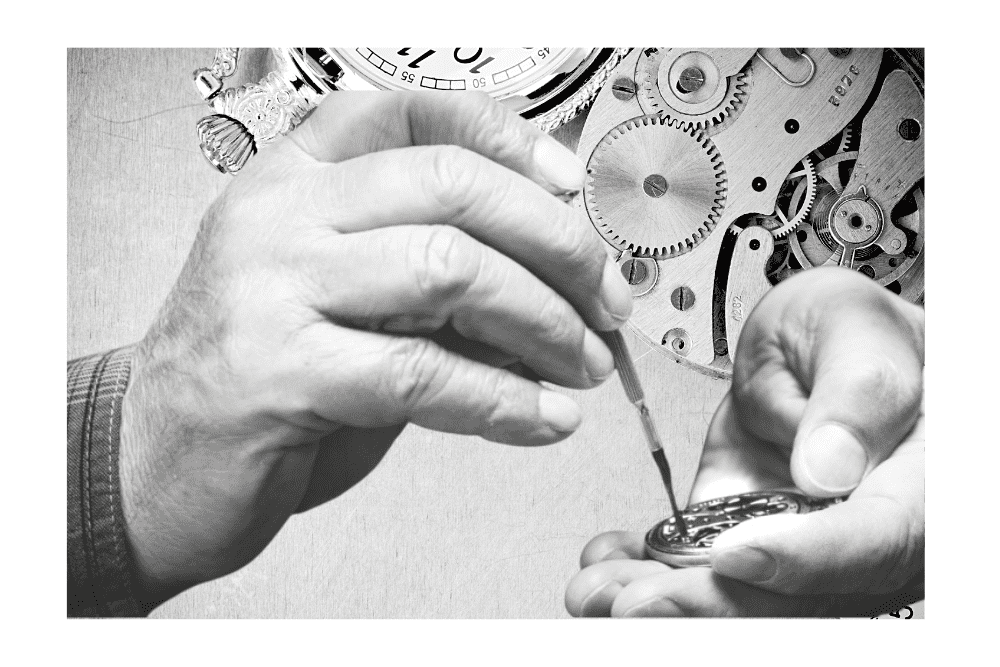
Conclusion
Watches with luminescent parts painted with radium paint are not a health hazard unless the glass is opened. Once this is done, there is the risk of inhaling or ingesting radium which can be detrimental to your health. Precautions should be exercised when removing radium paint from watch parts.
References
- https://www.researchgate.net/publication/282148413_Could_cleaning_of_watches_with_radium_painted_dials_cause_erythema
- https://www.watchrepairtalk.com/topic/10726-should-i-be-worried-about-radium/page/3/
- https://mb.nawcc.org/threads/radium-dialed-watches-what-to-do.135852/
- https://german242.com/en/removal-of-radium-paint-from-vintage-watch-dial/
- https://en.wikipedia.org/wiki/Radium_dial

